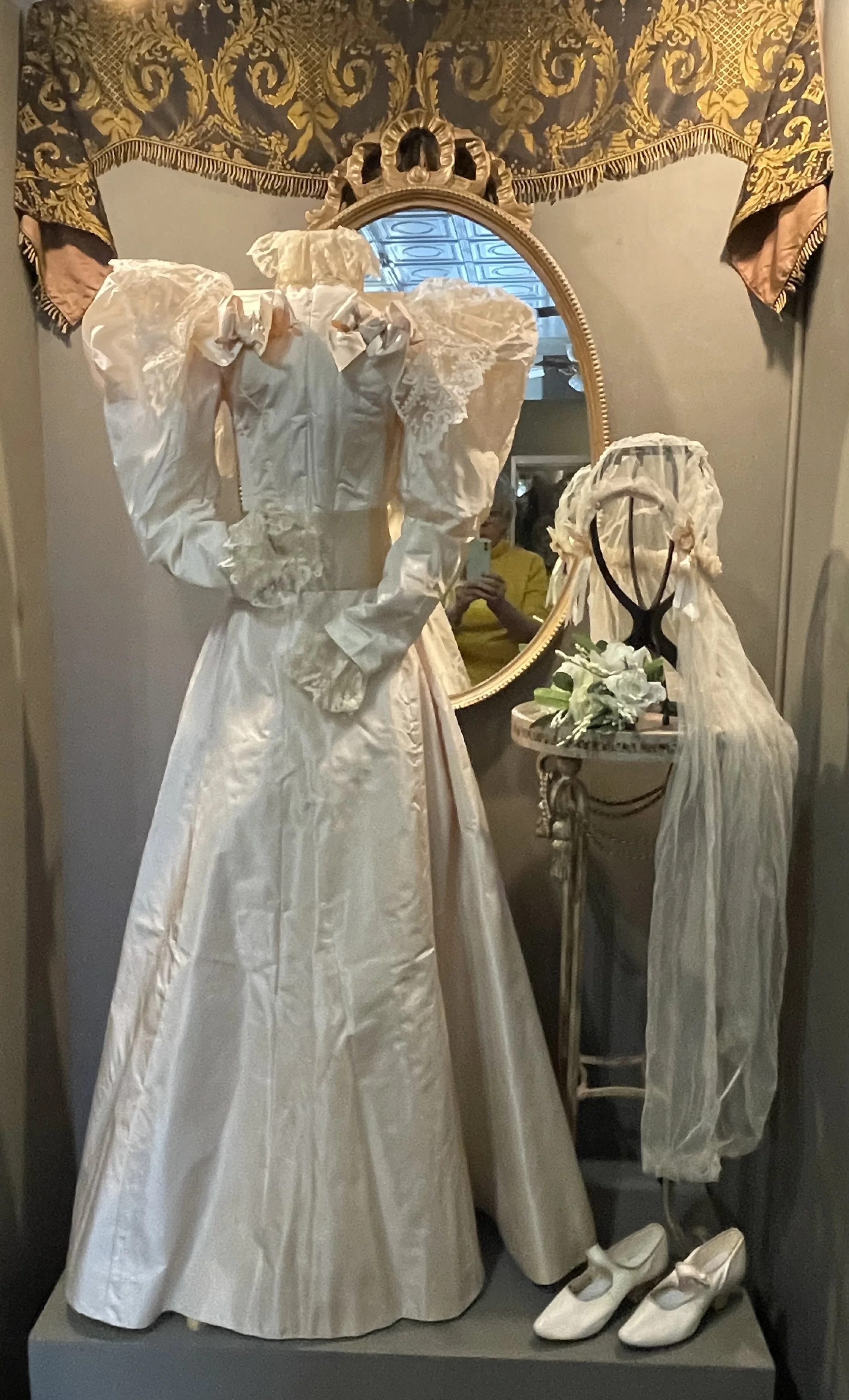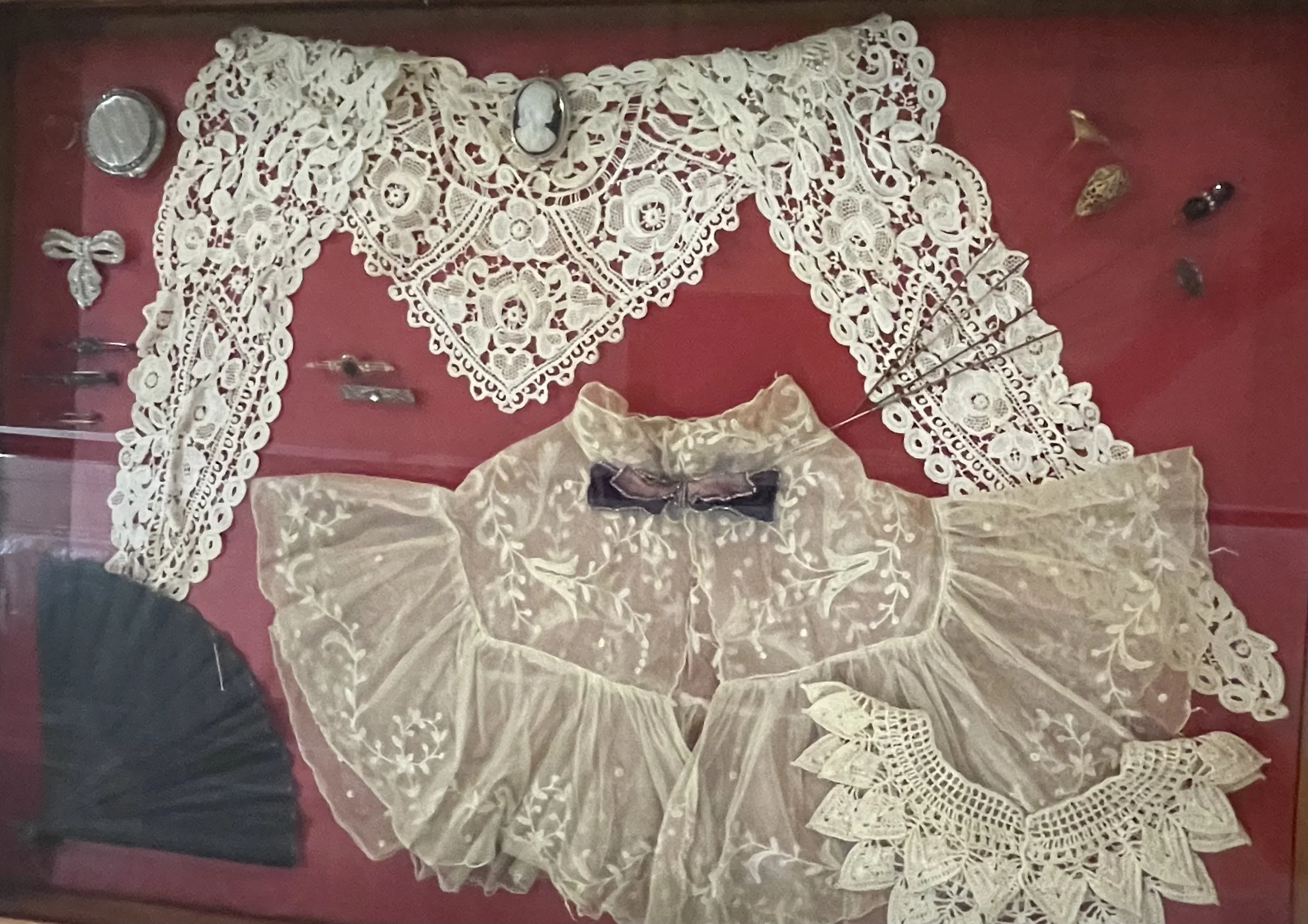Summer 2022
More is More
Women’s fashions in the late 1800s truly lived up to Mark Twain’s famous moniker for the Era, The Gilded Age. Elaborate construction, rich and vibrant colors, lavish fabrics, intricate trims, and a general love of excess and opulence typified the high styles of the 1870s through the 1890s. Popular trends during this period included tightly laced corsets, long boned bodices, elegant gloves, and the pursuit of an exaggerated hourglass silhouette. Women typically wore floor-length dresses and often changed their clothing multiple times a day to match various social occasions. Gowns were heavily decorated with ornamentation such as bows, fringe, buttons, beading, delicate lace, frills, and sparkling crystal embellishments, all of which contributed to a rich variety of textures on a single garment. Long sleeves and structured bustles accentuated the feminine figure, emphasizing both formality and grandeur. However, change was stirring beneath the surface; a new archetype known as the New Woman was emerging, poised to transform not only women’s clothing but also her role and place within society.









Clothing & Fabric
Research by David H. Fox
The New York Times, August 19, 1874:
“Wherefore ladies and gentlemen can disport themselves in their old clothes with impunity, and, indeed, the habit of most people is to wear just what suits them best. Gentlemen, on arriving at the Grove, generally lay aside their "store clothes" and don a flannel shirt, coarse pants, and immense bathing hat; while the ladies are rarely seen in fabrics more costly than calico or tarlatan, trimmed to suit the taste and complexion of the wearer.”
Fabrics
Calico is a plain-woven textile made from unbleached, and often not fully processed, cotton. It may also contain unseparated husk parts. The fabric is far coarser than muslin, but less coarse and thick than canvas or denim. However, it is still very cheap owing to its unfinished and undyed appearance. The raw fabric was dyed and printed in bright hues, and calico prints became popular in Europe.
Tarlatan is a thin, plain-weave, open-mesh cotton fabric finished with stiffening agents and sometimes glazed. “Attention has very frequently been called to the presence of large amounts of arsenic in green tarlatan, which has given rise so many times to dangerous symptoms of poisoning when made into dresses and worn, so that it is very rare now to see a green tarlatan dress.” (1883)
“The bustle was at its greatest extension by 1885. It was almost perpendicular to the back and heavily upholstered. The 1880s versions were as padded and heavily embellished as a drawing-room hassock of the period. It was a popular conceit that the cantilevers of these bustles could support an entire tea service. To sustain the greater weight of the 1880s gowns, light and flexible infrastructures were created with flexible materials--wire, cane, whalebone--held together by canvas tapes or inserted into quilted channels.”


